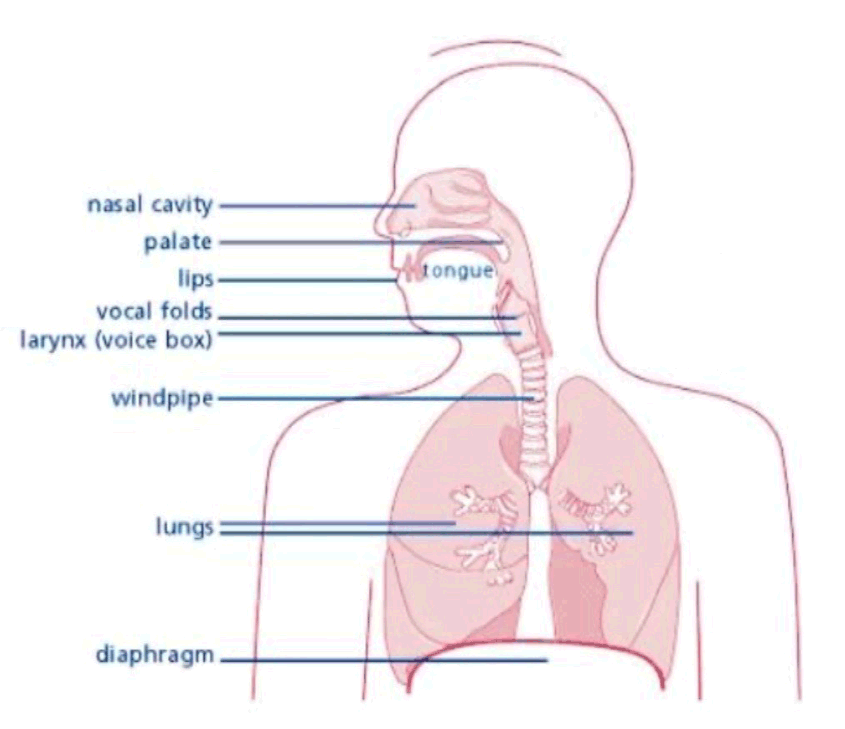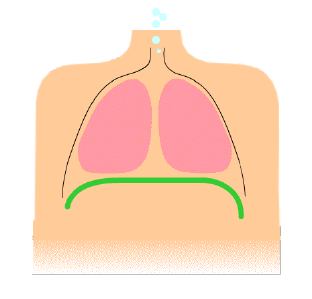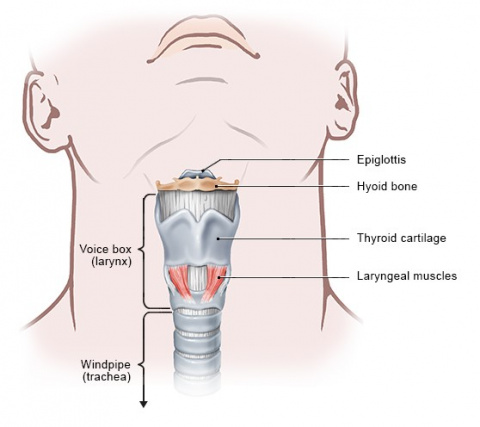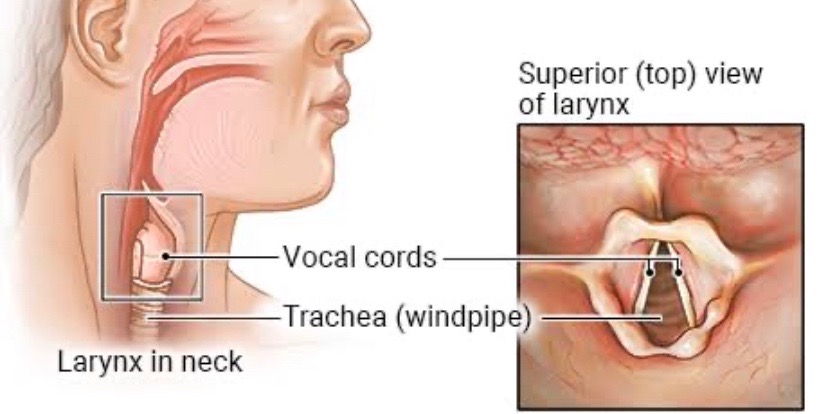2020年09月08日
Ph.D.ネリ・コイチェヴァ講座 第5回
Ph.D. Neli Koycheva
Date: September 8th, 2020
Anatomy of the voice
In the classical singing practice and theory stand hand by hand. Before we advance to the vocalization process itself, we should have the common acknowledgment of the anatomical structure of our voice, and how the vocal system is working. The organs, which take part in the process can be differed in 3 main roups:
The first group
Are the organs, that are connected with the singing, include those parts of the body, that provide it with air. The air is the media which is transforming in the voice. This group includes lungs, bronchi, trachea, and breathing muscularity.
I want you to pay attention of the breathing muscularity, because it will take an active part during the working process. They are in two types:

1.
Inspirational muscularity – inspirational. Here, the diaphragm
has the main function. It is a flat muscle in the shape of an umbrella.
When inhaling, it goes down and gets flatter. Thus, it gets to be as if a charger that takes the air into the lungs. During exhalation, the diaphragm rises above and eminds
as a cupola. Other muscles of this group are the ones connected to the
ribs and the collar bones. 75% of the inhalation process in performed by
the diaphragm, the remaining 25% are committed by the other muscles.
2.
The exhalation muscularity – expiration. It is the most important one in the singing process, and during the whole of our lives, we train these muscles, in order to sing beautifully and correctly. Those are four couples, which intertwine and shape the abdominal muscle waist-band. While singing, this waist-band has the most active, and important work.

This is exactly why, during the lesson, I spare some time for a specialized training, which is training, developing, and sustaining the
elasticity power of the mentioned above waist-line.
When it is trained in a long period of time, it gets to be an abdominal press, which, with the power of our own will, and thought control, pushes the air above. I am always repeating to my students, that the abdominal press is the motor of the human voice.
The second group
Are the large group of organs, connected with the singing, are the ones, that sound the air. Here the larynx, the pharynx, tongue, nose, the cavities surrounding the nose and above it, take part too.

1. The Larynx converts the air into a primary sound. It is a vertical tube, compounded of nine cartilages. Inside in the thinest part of the larynx, there are the vocal cords situated, which fulfill the function of the voice generators inside the human body. The vocal cords have a delicate, and in the same time complex structure. Their muscle fibers are able to be reduced into three different directions.

They can vibrate throughout their whole length, or just in different
parts of theirs, thus making the phonation. The vocal cords should
be elastic and strong. Also their color resembles the ivory color.

2. Resonators.
This group includes the places through which the produced in the larynx primary voice passes. Here the sound resonates, and gets its final shape, power and tone quality/timbre. After this, it’s flies away in the outer space with unique color. The resonators of the human voice are: the highest part of the larynx, the oral cavity, the nose, and the surrounding nasal cavity, These organs form the resonator tube. Under the larynx important resonators are trachea and the chest.
In a conclusion, the process is as follows: the air flow is putting in motion the vocal cords. They tremble and produce the voice waves. The voice waves reach out the resonators, and in the acoustic rules, create the phenomenon “human voice”.
Third group
We reached the human voice most important organ – the brain. The singing itself, is a psychophysiological process. The vocalization is a product of a highly organized neural action.
The singing is a neurological program of a very strict consistency. All of the singing habits are formed by the will power, and in consequence they get automated. What is very important to be known is that, before singing, the idea of the voice should be conceived. Out of it, the brain starts commanding all the parts of the vocal apparatus in the reflex arc principle. In a consequence, the breathing, singing, the resonance of the voice and the opposite hearing connection are being accomplished.
